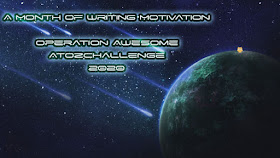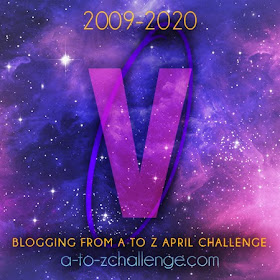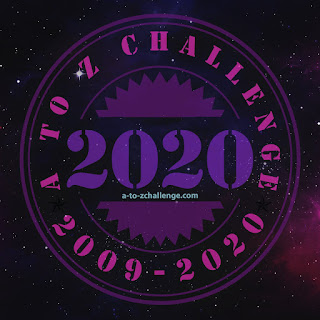
A Month of Writing Motivation is the Operation Awesome theme for the 2020 A to Z Challenge. This is a counterpoint post to yesterday.
 PART 2
PART 2Scrivener, as looked at through the eyes of someone who has used it for a few years.
How much someone loves or hates this program depends on two factors.
- How you write. Specifically, how you organize and think when writing.
- How much time you devote to learning and customizing the program to suit you.
I took a class on how to use this on March 18, 2015, taught by Joseph Michael (Your Scrivener Coach). (And have gotten over 200 emails from him since, some more useful than others.) I bought books on how to use it (the most useful of which is out of print- Goodreads is the only site I still see it on). I've downloaded templates to expand my base options. (I have the Windows version. To my understanding, the Mac one has more options and a slightly different look.)
This is a list of my top-ten favorite features.
- Auto-backup every few seconds (I think the default is 3 seconds, but you can customize it).
- Internal trashcan (in case I change my mind)
- Import nearly anything! Images, word files, all those notes amassed over time that would be a story if it were organized...
- Actually organize stuff! I create the outline, and then fill in where the chapters go, and then create scenes in there. And if I need to move a scene? Drop and drag! Great for when I know what scene I'll eventually write but have no idea when it'll show up.
- Dual windows. I love having my manuscript in one window, and my list of characters in the other. What was the name of the horse? Oh, there we go. Who was the waitress? Right there. I don't have to scroll. I can leave myself little notes! And I don't have to use multiple tabs (like Google Docs) or have multiple cases of MS Word open. (Did you hear that? It's my computer breathing a sigh of relief.) That split-screen can be vertical or horizontal.
- Word Count goal! I'm looking at you, NaNoWriMo participants.... 1667 words needed today? Watch the little bar at the bottom turn from red to yellow to green as you reach the goal. So satisfying.
- Search the entire project. I've had to use this a few times...
- A separate folder for all of my research. And files for each of my characters and settings. And yeah, I can import pictures to go with those. When I'm ready to publish, I can pick what files to export. (There is an internal publisher, but I haven't used it.)
- Index cards.
- There's a name generator wizard with a lot of options. It'll keep you from falling down the Internet rabbit hole of name researching for minor characters.
 |
| organization |
 |
| Word count meter! Split-screen view! |
 |
| Search the project! View words or index cards. |
 |
| The index card corkboard. |




I have Scrivener, and even paid for the latest upgrade, but honestly, I don't use it. For one thing, it's designed for fiction writers primarily, for another, it seems like an awful lot of work. Maybe I'll get back to it someday...
ReplyDeleteI was a Word fan - and still use it for Blog post and shorts - but for my novel projects, Scrivener is tops...took me a few years to switch, via WriteItNow, but I keep learning more about this awesome programme. I'm even about to move all my shorts into one Scrivener file as I learnt in a recent Pro Writing Aid webinar with Anne Rainbow (Red Pen Editing).
ReplyDelete